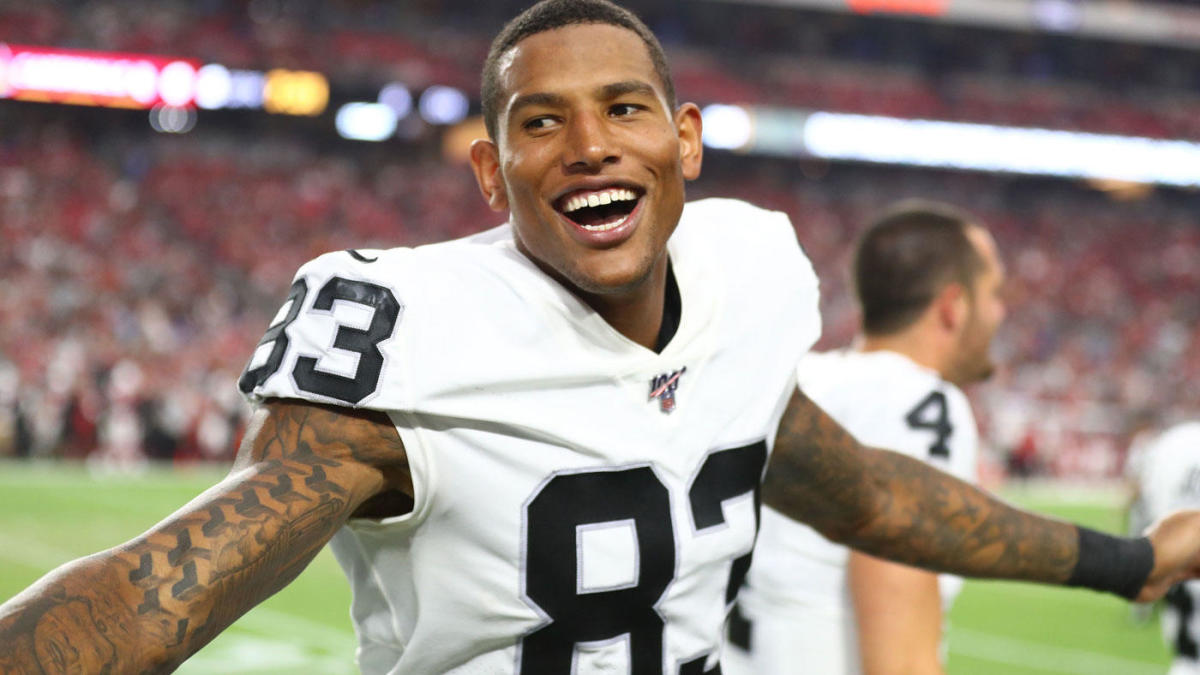
Yards Per Fantasy University: Roster Construction & Positional Value
Zero running back. Modified zero running back. Robust running back. Late-round quarterback. These are a few of many draft strategies that one will hear about in the world of fantasy football. But we cannot determine what kind of strategy to deploy until only after we have studied the roster and score setting for a specific league.
SEE ALL COURSES
Only after we understand the requirements for a league can we then prepare for it. Preparing by establishing tiers and identifying values at different positions is crucial to drafting successfully. But perhaps the most critical step to constructing a winning roster is to practice through mock drafts.
This course will provide a few fundamental guidelines that will help you become an airtight fantasy drafter. If you have any further questions after reading this, please feel free to reach out to me on Twitter @ZKantzFF.
SCORE & ROSTER SETTINGS WILL DICTATE DRAFT STRATEGY
Before preparing for any league, first and foremost, always research the league’s score and roster settings. For example, these days, it seems that the typical format has become some variation or a combination of point-per-reception, tight end premium, and super-flex settings.
Point per reception implies that your team receives one point for every ball caught. In this instance, pass-catching skill position players would have priority. You will want to specifically first be looking at elite pass-catching running backs in the first three rounds. After that, it’s ideal to pivot towards wide receivers and elite tier tight ends. Quarterbacks are typically put on the back burner until the later rounds unless a value like Patrick Mahomes falls to the 3rd round. We’ll get to values later.
The tight end premium setting gives bonus points for receptions made by tight ends on your team. The logic being that elite production at the tight end position is reserved to the top tier. This setting heavily incentivizes the early drafting of tight ends such as Travis Kelce, Darren Waller, and George Kittle anywhere in the first two rounds. Doing so allows for a massive advantage at the position.
Super-flex positions allow for a quarterback to play in the flex slot. Quarterbacks are generally the highest scoring players on your roster in any given week. By that logic, if we can start two of them, we’ll want to prioritize drafting two solid quarterbacks early.
As you can see, prioritizing skill positions depends on the demand of the position. These settings are just a few examples of hundreds of variations you will find out there. There are so many factors in fantasy football that will play into how you approach the draft. That is why you’ll want to find out the settings as early as possible and start practicing in mock drafts.
PRACTICE WITH MOCK DRAFTS
 Did Darren Waller just get drafted right before your pick? Are you going to tilt and reach for Mark Andrews two rounds early or pivot and find value at another position? The outcome will be determined by the amount of preparation you’ve done through mock drafts.
Did Darren Waller just get drafted right before your pick? Are you going to tilt and reach for Mark Andrews two rounds early or pivot and find value at another position? The outcome will be determined by the amount of preparation you’ve done through mock drafts.
This is the most important guideline. Do as many mocks as possible. I can’t stress this enough. Have you already done 50 mocks? Good. Now do 50 more. Think of how NFL players practice during training camps in preparation for the season. That is precisely how you should approach mock drafts.
The entire point of mock drafts is to expose the mind to all the twists and turns one will encounter during actual drafts. Over time, the mind rewires itself to all the different scenarios so that the drafter will never be caught off guard.
Each draft position is going to have its strengths and weaknesses. Doing enough mocks will show you which players will generally be made available to you. You can even experiment with different approaches. Even if you encounter an unfavorable outcome during your mock, do not start over. Play it out. See what unfolds.
If you want to test your nerves, then take what you’ve learned in your mock drafts to best ball drafts on Underdog Fantasy. If you use the promotion code YARDSPER when signing up, you get a free $25.00. It helps get the draft day butterflies settled, and you might win some money while you’re at it.
UNDERSTAND POSITIONAL VALUE In Fantasy Football
 Positional value refers to the expected points you’re going to receive from a player relative to where you drafted them, otherwise known as their average draft position or ADP. ADPs are adhered to by the public right after the NFL Draft when rookies settle into their new teams. Those ADPs remain stable up until training camps start. As more and more training camp reports are released, and we see them in action during the preseason, expect to see their ADPs begin to move.
Positional value refers to the expected points you’re going to receive from a player relative to where you drafted them, otherwise known as their average draft position or ADP. ADPs are adhered to by the public right after the NFL Draft when rookies settle into their new teams. Those ADPs remain stable up until training camps start. As more and more training camp reports are released, and we see them in action during the preseason, expect to see their ADPs begin to move.
All players are sorted into tiers of their respective position. Tiers are structured as elite, great, good, etc., and are created based on players’ expected production for the upcoming season (targets, receptions, yardage, touchdown, etc.). Let’s go back to the Darren Waller and Mark Andrews example I used earlier.
Darren Waller is part of the elite tier of tight ends along with Travis Kelce and George Kittle. They are the cream of the crop at the position. Mark Andrews is in the second tier of tight ends along with T.J. Hockenson and Kyle Pitts. Andrews is solid but not close to what Waller is going to produce in the 2021 season.
If we look at their projections for the 2021 season, we see that Waller is projected to have 100 receptions, 1148 receiving yards, and seven touchdowns (For the record, I think those are very conservative projections). These numbers are comparable to WR1 numbers. If we compare which wide receivers Waller is going in between, we can better understand his value.
Currently, his ADP has Waller being drafted as the 27th player overall. That is right between Justin Jefferson and Michael Thomas. Both of those wide receivers are certifiable WR1s with comparable projections to those of Waller’s.
So that is a player you’ll be getting, at the end of the second round or early third round, who will be putting up WR1 numbers in your tight end slot. I’m taking Waller above those wide receivers every time. That is a guaranteed value.
Now let’s look at Andrews. As I said before, based on his projections, Andrews is squarely in the second tier of tight ends. Fantasy Pros has Andrews projected for 69.5 receptions, 848 yards, and eight touchdowns. It’s a reasonable projection, and his ADP isn’t horrible being drafted in the middle of the fifth round. But I wouldn’t take him over other players he’s going next to, such as Robert Woods or Myles Gaskin. While he’s a solid starting tight end, he can’t give me the same edge that Gaskin or Woods would.
In that instance, he is currently being overvalued and should be avoided at his current ADP. I would rather wait and pivot to Hockenson, who is going a full round later and is projected to put up nearly the same production.
In that same breath, I would wait even further and take Kyle Pitts, who is going half a round later than Hockenson. Pitts is a rookie but is uber-talented. He has a solid floor with plenty of upside and is much closer to Waller’s calibre than Andrews or Hockenson.
Understanding value comes with a bit of research, but once you have a grasp on where these players are going and what you can expect out of them, it’s easier to assess.
CONCLUSION
- Constructing a successful roster is attainable through research and practice.
- Always study the league’s roster and score setting before preparing for the draft.
- Establish tiers and identify values.
- Mock your ass off.
And of course, you can always ask the Yards Per Fantasy team for help and advice any time with our Ask The Expert feature.
Professor: Follow @ZKantzFF

